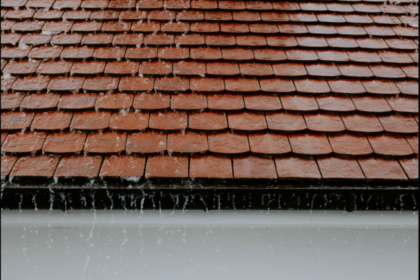 What Are the Signs of a Leaking Roof in Winter?
What Are the Signs of a Leaking Roof in Winter?
We’ve already had several named storms this autumn, and temperatures are plummeting. At times like this, your roof is especially at risk of developing leaks. At best, this can waste a lot of money in more heating than would be necessary in a watertight home, while at worst it can create health hazards and compromise your home’s structure.
But how do you tell whether your roof is leaking, so that you can get it fixed quickly?
Problems Inside Your Home
There are a number of internal signs that your roof might be leaking, and simply keeping your eyes open can tip you off. These include:
- Damp patches on walls and ceilings — If water is getting in, it’s likely to initially get into walls and ceilings, where it will show up as damp patches. These are far worse than just being unsightly. Besides risking the integrity of your home’s structure, damp is ideal for mould or mildew to grow — both major health hazards.
- Water on the floor — Clearly, if water is coming through walls or ceilings, eventually it will start dripping onto the floor, even forming puddles. While you’d hope to pick up signs earlier, water puddling on the floor means it’s urgent to fix the problem.
- Damp insulation — Rain or snow getting into the roof space will almost certainly affect your roof insulation. If you notice the insulation materials getting damp, this is likely to show a leak.
Look Out for Ice Dams
In addition to the tell-tale signs indoors of a leaking roof, you can also keep your eyes open for ice dams at the eaves. These are caused when warm air rising inside to the roof melts the snow on the roof. This then runs down to the colder eaves and refreezes as ice.
The problem with ice dams is that they can put extra pressure on the roof. Since ice is heavy, it can cause cracks in any weak spots and create a hole for the rain to get in.
Searching for Leaks in Your Roof
By the time you happen to notice leaks in your roof, a good deal of damage might have already been done. This is why it’s vital to proactively inspect your roof for damage — at least twice a year, as well as after any high wind, storm or cold snap.
You can check for broken or missing tiles, or for tears in a flat roof, from street level with binoculars. However, if you have a good ladder and are confident using it, looking from up close is even better.
In addition, you may be able to find leaks from inside. Go into your roof space in daylight and turn off all artificial light. If there are holes, they should show up as pinpricks of light.
Roof Repairs Are for the Professionals
Leaks in your roof need to be repaired as soon as possible, to prevent water damage inside from escalating into a major issue. However, apart from the simplest jobs (cleaning gutters, for instance), roof repairs are beyond even the experienced DIYer. You’ll need a professional roofing firm with a proven record of excellence.
Give Empire a call to find out how we can give your roof the TLC it needs.









